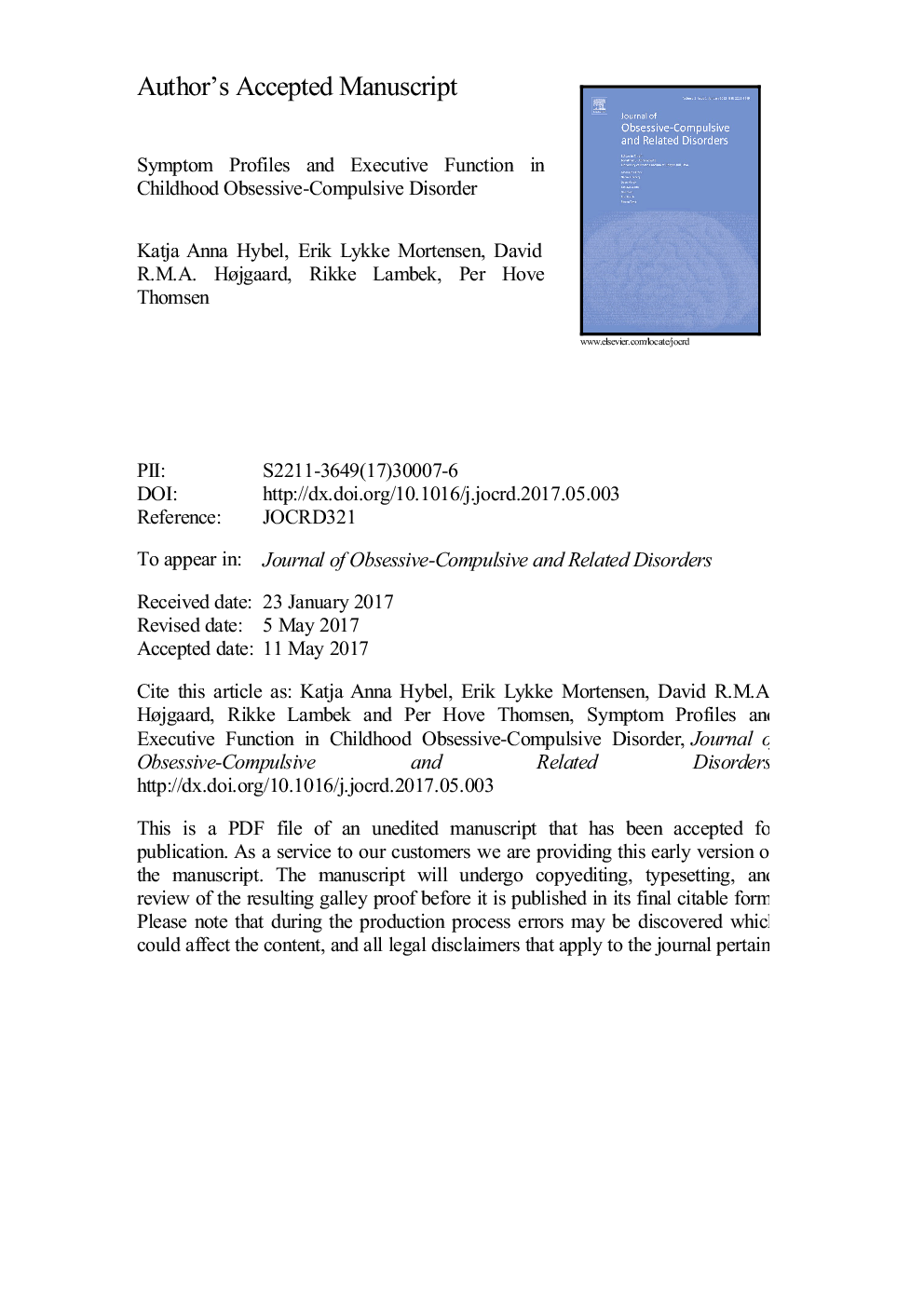ترجمه فارسی عنوان مقاله
علائم و عملکرد اجرایی در اختلال وسواسی-اجباری در دوران کودکی
عنوان انگلیسی
Symptom profiles and executive function in childhood obsessive-compulsive disorder
| کد مقاله | سال انتشار | تعداد صفحات مقاله انگلیسی |
|---|---|---|
| 127880 | 2017 | 51 صفحه PDF |
منبع

Publisher : Elsevier - Science Direct (الزویر - ساینس دایرکت)
Journal : Journal of Obsessive-Compulsive and Related Disorders, Volume 14, July 2017, Pages 36-46
ترجمه کلمات کلیدی
اختلال وسواسی-اجباری، علائم بعد زیرگروه، عملکرد اجرایی، تجزیه و تحلیل مشخصات خاموش، فرزندان،
کلمات کلیدی انگلیسی
Obsessive-compulsive disorder; Symptom dimension subgroups; Executive function; Latent profile analysis; Children;

